FODMAPs Food List: What to Avoid When Following the Low FODMAP Diet
FODMAPs are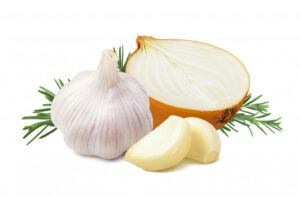 a key consideration when addressing one’s possible sensitivity to certain foods.
a key consideration when addressing one’s possible sensitivity to certain foods.
If gut imbalance of any kind is present, it is likely that FODMAPs will create symptoms of digestive upset such as bloating, gas, abdominal pain, and more.
This will henceforth warrant a temporary period where a low FODMAP diet is administered.
But what are FODMAPs and what is a low FODMAP diet anyway?
Here we will explore everything FODMAPS, including a FODMAPs food list that is a very helpful resource to refer to when embarking on this type of specialized eating plan.
What are FODMAPs?
FODMAP stands for Fermentable Oligosaccharides, Disaccharides, Monosaccharides, and Polyols. All of those long words refer to a form of carbohydrate and fiber found in certain vegetables such as cabbage and garlic.
Specific FODMAP components include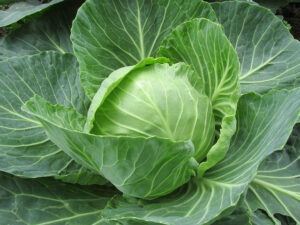 fructose (found in most fruits), fructans (found in vegetables such as garlic and onion), lactose (found in many dairy items), GOS (galacato-oligosaccharides, found in beans/legumes), and mannitol & sorbitol (found in various vegetables).
fructose (found in most fruits), fructans (found in vegetables such as garlic and onion), lactose (found in many dairy items), GOS (galacato-oligosaccharides, found in beans/legumes), and mannitol & sorbitol (found in various vegetables).
When any form of gut imbalance is present, one may have an impaired ability to digest these components.
“Gut imbalance” can refer to any number of possible issues in the gut. These can include:
- An imbalance in gut flora/bacteria: favoring “bad” bacteria with fewer “good” bacteria/probiotics.
- A gut infection such as Small Intestinal Bacterial Overgrowth, candida/fungal infection, parasitic infection, and more.
- Lowered or impaired digestive capacity such as low hydrochloric acid production (stomach acid), low digestive enzyme production, etc.
- “Leaky gut” which refers to a state where the tight junctions in the walls of the intestines have become widened and allow undigested food particles and other contents of the intestines to leak into the bloodstream and travel throughout the body.
When unable to properly digest FODMAPs, these carbohydrates/fibers move through the small intestine undigested. Once they reach the large intestine, the bacteria in the colon begin to ferment them.
Usually, these bacteria should be fermenting as part of the normal digestive process, however, in this case, these bacteria are fermenting undigested food instead of food that has been properly broken down in the small intestine.
This fermentation of the undigested carbohydrates and fibers then causes symptoms.
Symptoms can also be caused by the FODMAPs drawing extra water into the intestines.
This impaired digestive ability presents as the following symptoms after the consumption of high FODMAP containing foods:
- Bloating and abdominal
 distention/an uncomfortable feeling of fullness and pressure in the abdomen
distention/an uncomfortable feeling of fullness and pressure in the abdomen - Diarrhea
- Constipation
- Gas
- Stomach and intestinal pain
- Nausea
- More
Personally, I experienced these symptoms after eating these types of foods for a while but didn’t know that FODMAPs in particular were the cause.
I had recently switch over to a mostly whole food eating plan that was full of raw and cooked vegetables such as cabbage, garlic, onions, and brussels sprouts galore.
Not only were my digestive symptoms not improving, they were getting worse and I couldn’t figure out why, until I discovered what FODMAPs were.
The thing was, I had multiple forms of gut imbalance (as described above) going on that I was trying to heal, but because of these imbalances, my body couldn’t yet properly digest these types of foods and my symptoms only worsened.
After implementing a low FODMAP eating plan, my digestive symptoms dramatically improved almost immediately.
Along with a low FODMAP diet, individuals who are sensitive to these foods may benefit from supplementing with a digestive enzyme product that contains the enzyme alpha-galactosidase. This is an enzyme that is not normally produced within the body that helps to break down oligosaccharides, the “O” in FODMAPs.
A Low FODMAP Diet is Temporary
It is important to note that following a low FODMAP diet is only temporary.
As you will see in the following lists, foods that are high in FODMAPs (particularly the vegetables) are incredibly healthy, nutrient-packed foods that should definitely be a part of any balanced whole food diet.
Eliminating them temporarily allows for the gut to heal and for other issues to be addressed (such as healing possible gut infection, repopulating the gut with good bacteria/probiotics, improving digestive function, etc).
Then, after a period of time (usually a number of weeks to months, but it is totally unique to the individual), you can gradually begin reintroducing these foods back into your diet.
And as with anything that has to do with nutrition, your own dietary implementations will depend on your unique bioindividuality.
You may be more sensitive to certain higher FODMAP foods and not others, as every body is different and we will all have a differing set of circumstances and individualized considerations to adhere to.
FODMAPs Food List
When following any kind of specialized eating plan, it is very convenient and helpful to have a comprehensive list of the foods to avoid/foods to focus on that you can carry along with you to go grocery shopping, when eating out, or when preparing your meals at home.
The following are foods that are considered high FODMAP, so these foods are greatly reduced, avoided, or eliminated as part of a low FODMAP eating plan.
High FODMAP Foods:
VEGETABLES:
- Garlic
- Onions (including shallots and scallions)

- Artichoke
- Cabbage (including fermented cabbage called sauerkraut)
- Cauliflower
- Brussels Sprouts
- Beets (in larger amounts, small amounts are ok)
- Celery
- Okra
- Asparagus
- Mushrooms
- Chicory leaves
- Leeks
- Snow peas
- Cassava
FRUITS:
- Apples
- Avocado (in large amounts, very small amounts are usually fine on a low FODMAP diet)
- Apricots

- Cherries
- Blackberries
- Figs
- Watermelon
- Peaches
- Pears
- Plums
- Nectarines
- Pomegranate
- Prunes
- Currants
- Dates
- Grapefruit
- Mango
- Plum
- Persimmon
BEANS:
- Black eyed peas
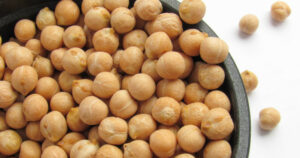
- Butter beans
- Lima beans
- Broad beans
- Soybeans
- Lentils
- Kidney beans
- Chickpeas
- Split peas
GRAINS:
- Any wheat containing product
- Rye
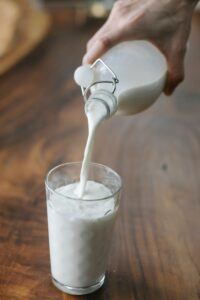
- Barley
- Amaranth
- Spelt
- Couscous
DAIRY:
- Cottage cheese
- Cream cheese
- Ricotta cheese
- Yogurt
- Milk (cow, goat, sheep)
- Buttermilk
- Kefir
SWEETENERS (checking labels of packaged foods is key to ensure one is avoiding these common ingredients):
- Agave

- Honey
- High fructose corn syrup
- Mannitol
- Sorbitol
- Isomalt
- Maltitol
- Xylitol
BEVERAGES:
- Teas: chai, dandelion, chamomile, fennel
- Coconut water
- Soy milk
- Juices made from high FODMAP fruits and vegetables
- Kombucha
- Soda
- Sports drinks
OTHER:
- Because FODMAPs are also excellent prebiotics, meaning they serve as food for good bacteria in your gut, many gut health supplements and probiotic supplements will contain ingredients such as FOS and inulin, both of which should be avoided when following a low FODMAP diet.
The following types of foods are considered low FODMAP and are acceptable when following a low FODMAP diet.
Low FODMAP Foods:
VEGETABLES:
- Carrots

- Parsnips
- Rutabaga
- Cucumber
- Eggplant
- Bell peppers
- Broccoli
- Green beans
- Pumpkin
- Bean sprouts
- Radish
- Corn
- Seaweed
- Capsicum
- Spinach
- Kale
- Collard greens
- Swiss chard
- Lettuce
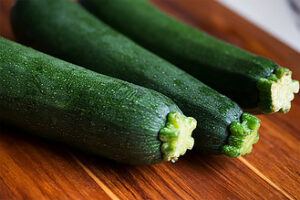
- Arugula
- Tomato
- Water chestnuts
- Zuccinini
- Squash
- Turnip
- Endive
- Fennel
- Ginger root
- Beets (small amounts)
FRUITS:
- Blueberries
- Raspberries
- Olives
- Kiwi
- Lemon
- Lime
- Bananas
- Plantains
- Dragon fruit
- Cantaloupe
- Honeydew Melon

- Grapes
- Papaya
- Oranges
- Strawberries
- Rhubarb
- Pineapple (small amounts)
- Avocado (small amounts)
GRAINS:
- Brown rice
- Basmati rice
- Oats
- Quinoa
- Tapioca
NUTS & SEEDS + OILS:
- Most nuts and seeds are low FODMAP
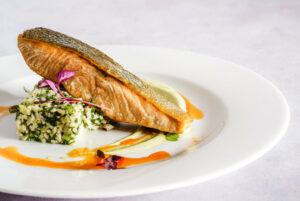
- Most oils such as olive, coconut, sunflower, and sesame oils are low FODMAP
MEATS/PROTEINS:
- Eggs
- Most seafood & fish
- Chicken
- Turkey
- Beef
DAIRY:
- Feta cheese
- Cheddar cheese
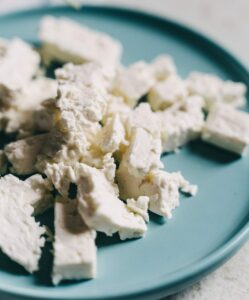
- Parmesan cheese
- Havarti cheese
- Mozzarella cheese
- Swiss cheese
- Butter
- Brie
SWEETENERS:
- Maple syrup
- Brown sugar
CONDIMENTS & SPICES:
- Mustard
- Mayonnaise
- Pesto
- Wasabi
- Most herbs & spices are low FODMAP

BEVERAGES:
- Black tea
- Green tea
- Other teas such as peppermint, ginger, lemon
- Coffee
- Water
- Almond and other nut milks
- Juices from low FODMAP fruits & vegetables
In Closing…
As we’ve explored here, following a low FODMAP diet is sometimes required when gut imbalance and impaired digestive capacity are present.
Temporarily reducing or eliminating higher FODMAP foods in favor of lower FODMAP foods can be a helpful step in reducing digestive symptoms while a gut healing approach is being implemented.
REFERENCES